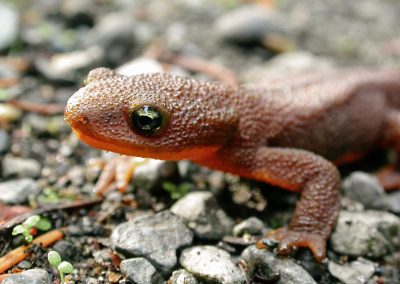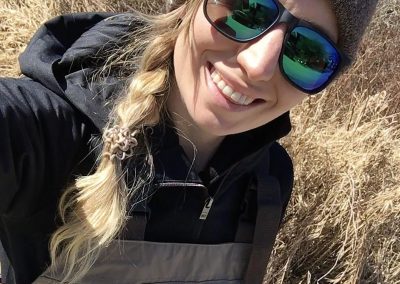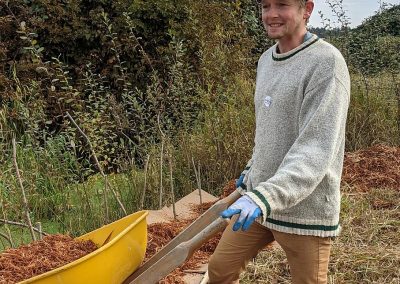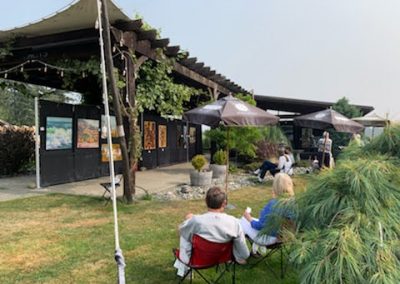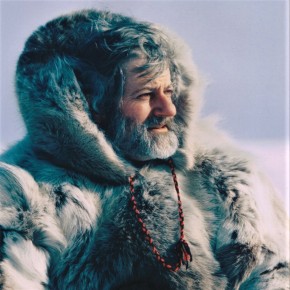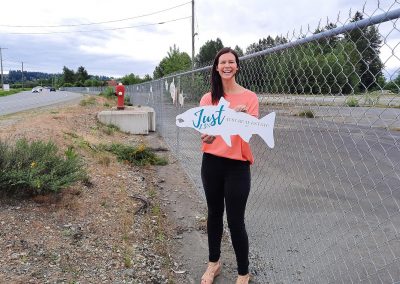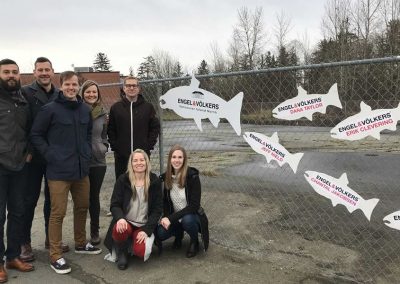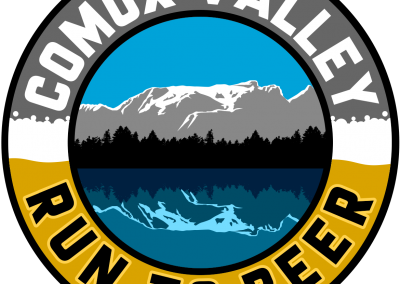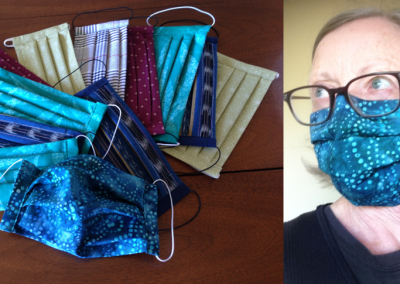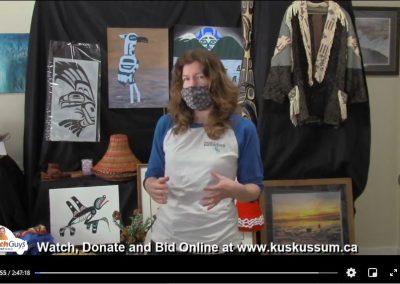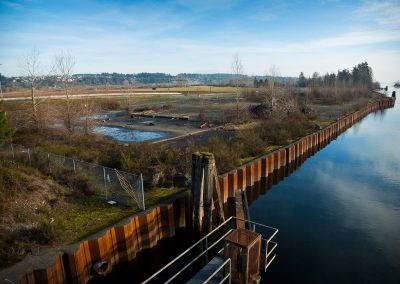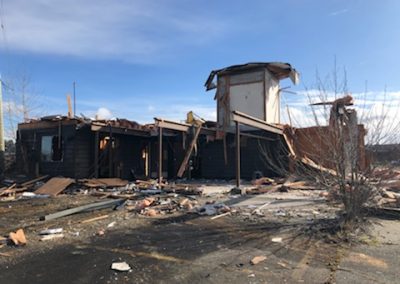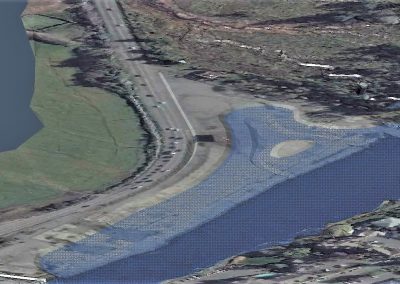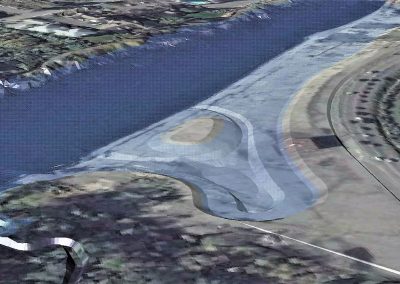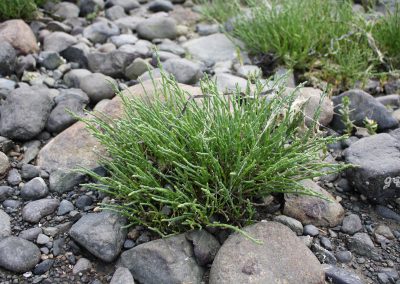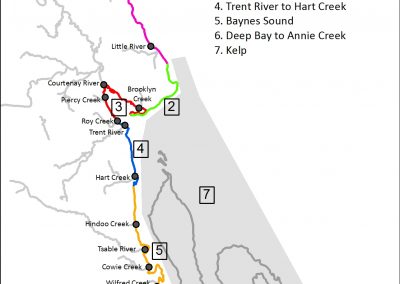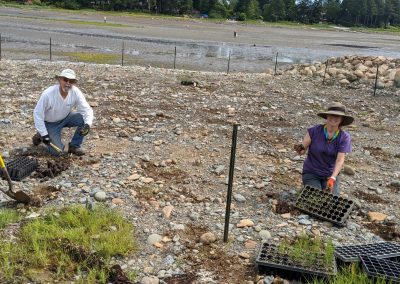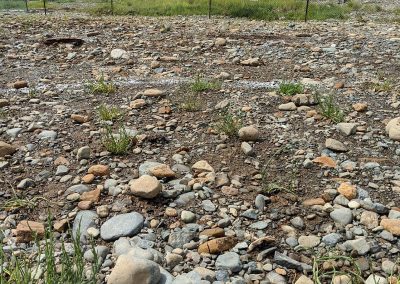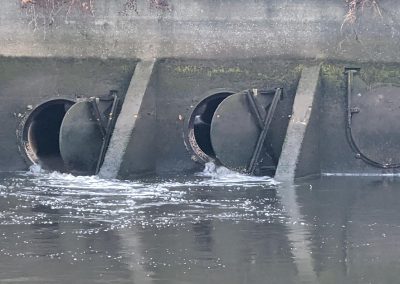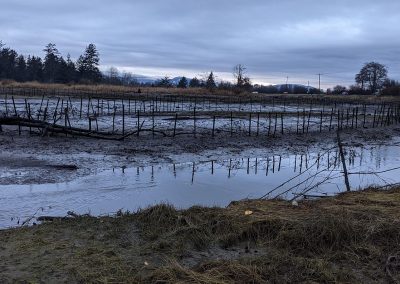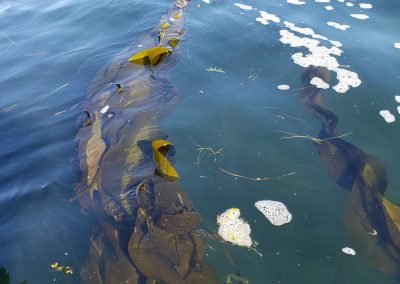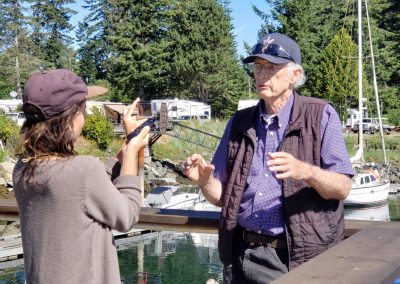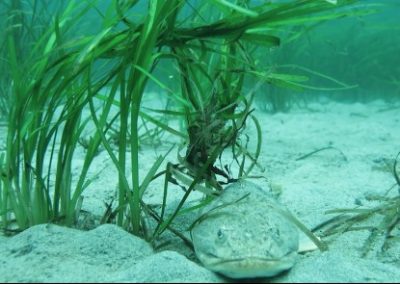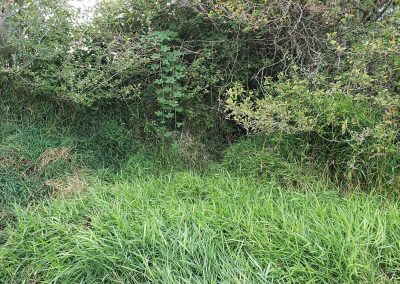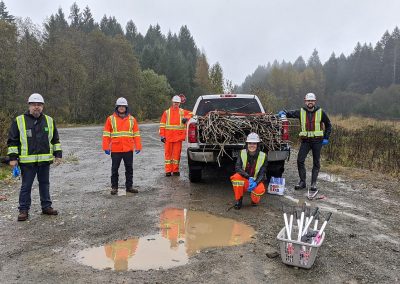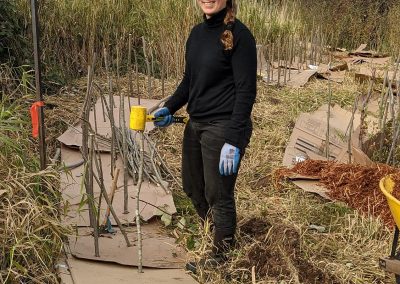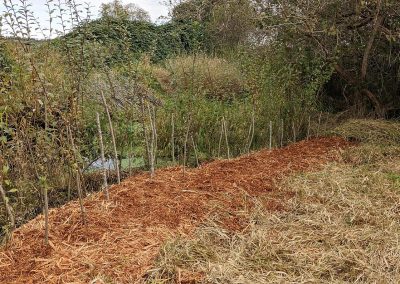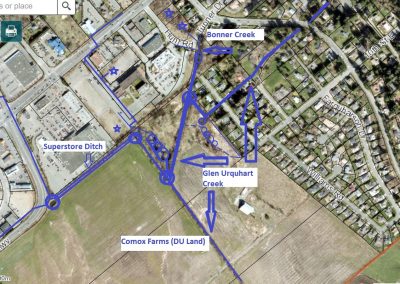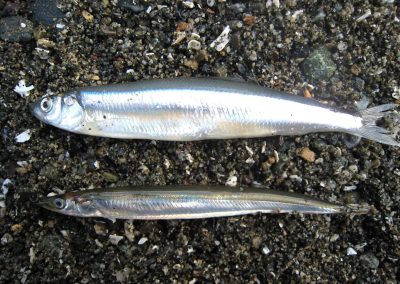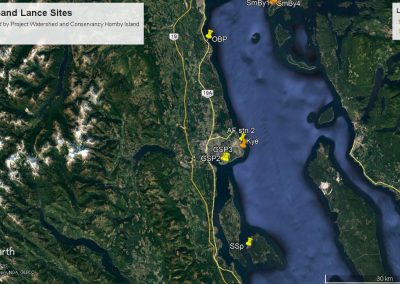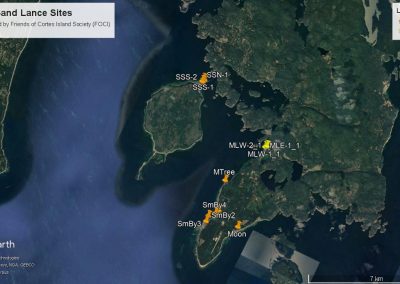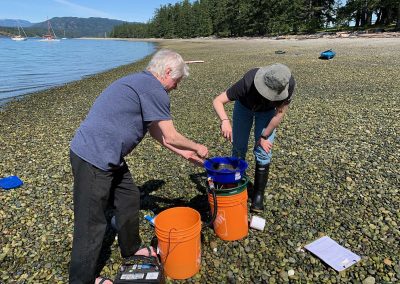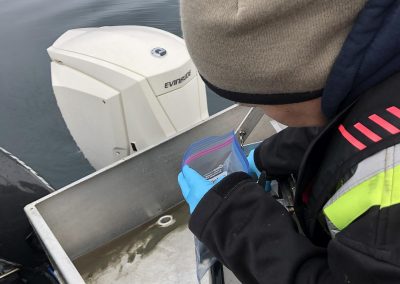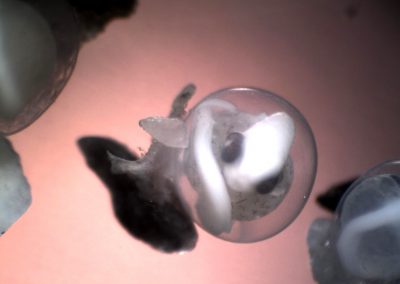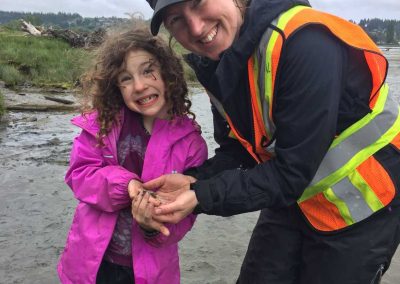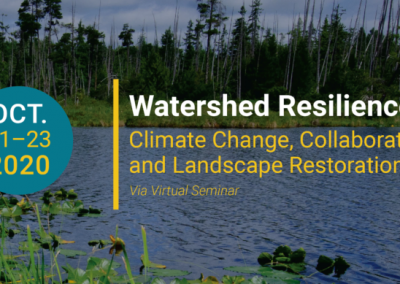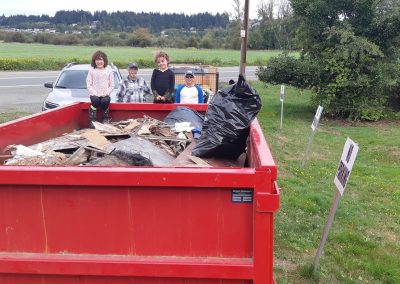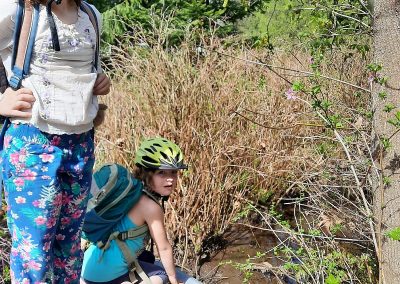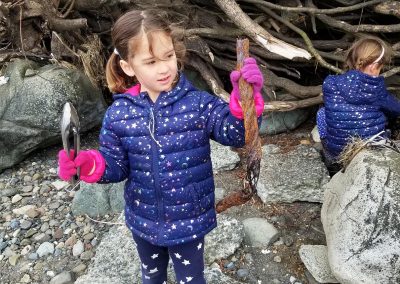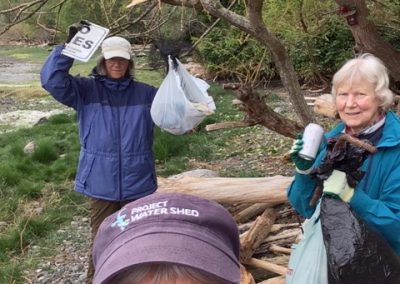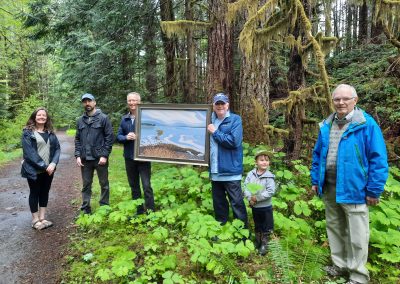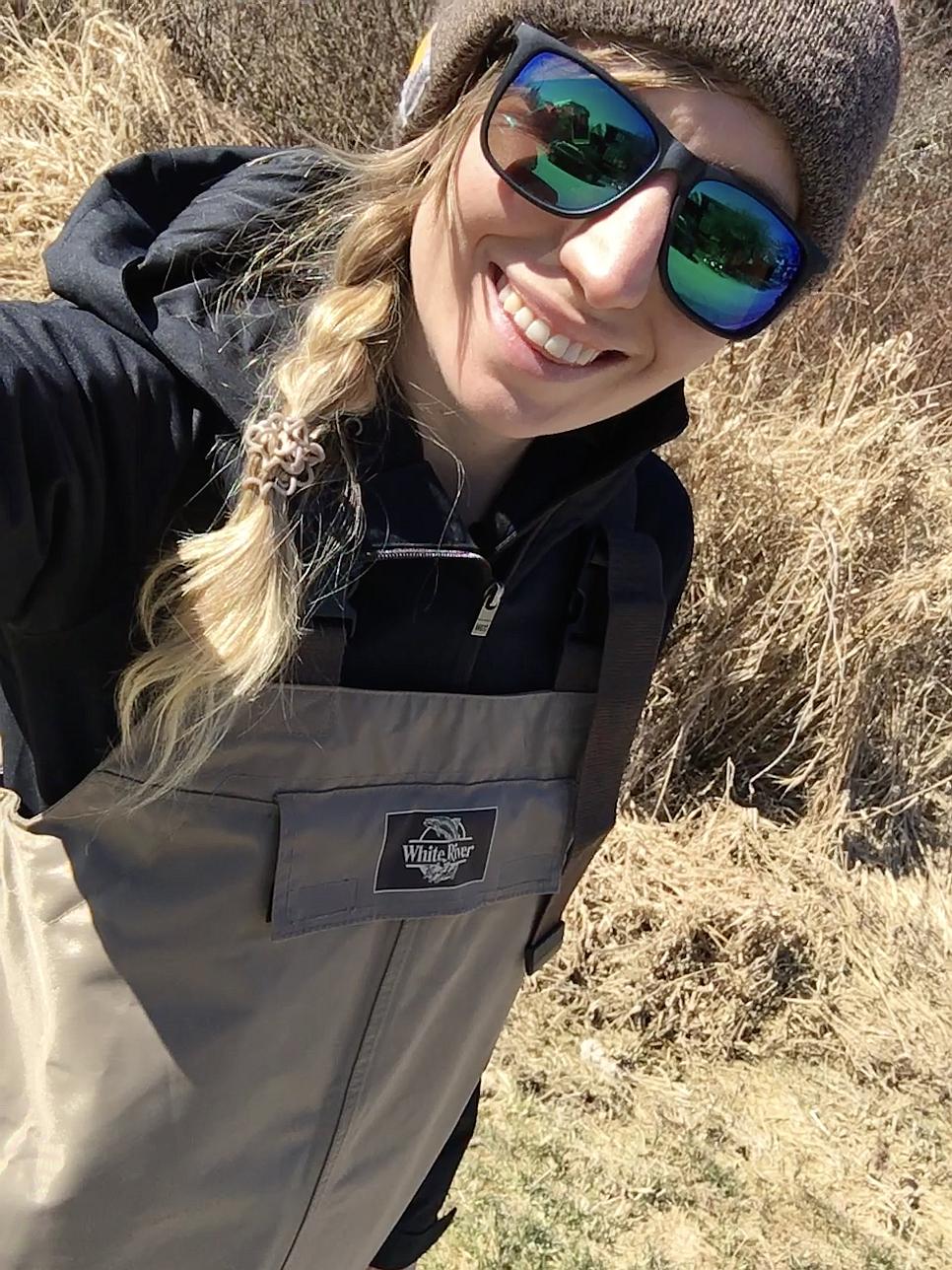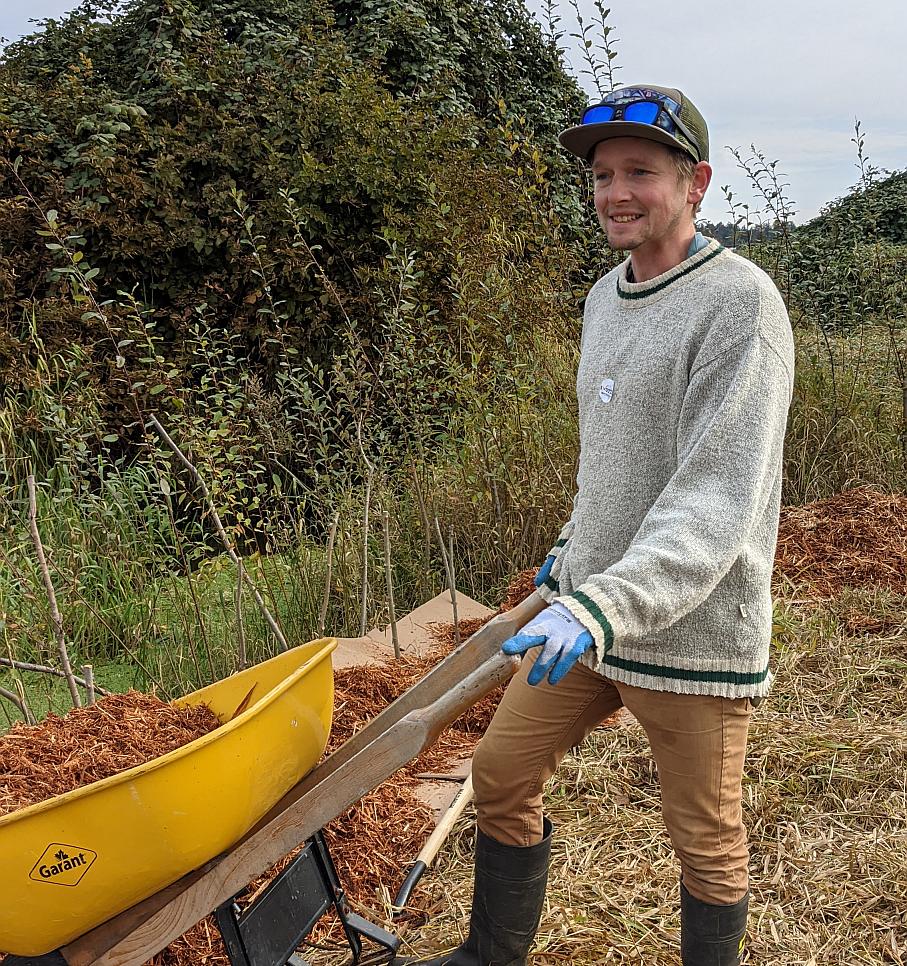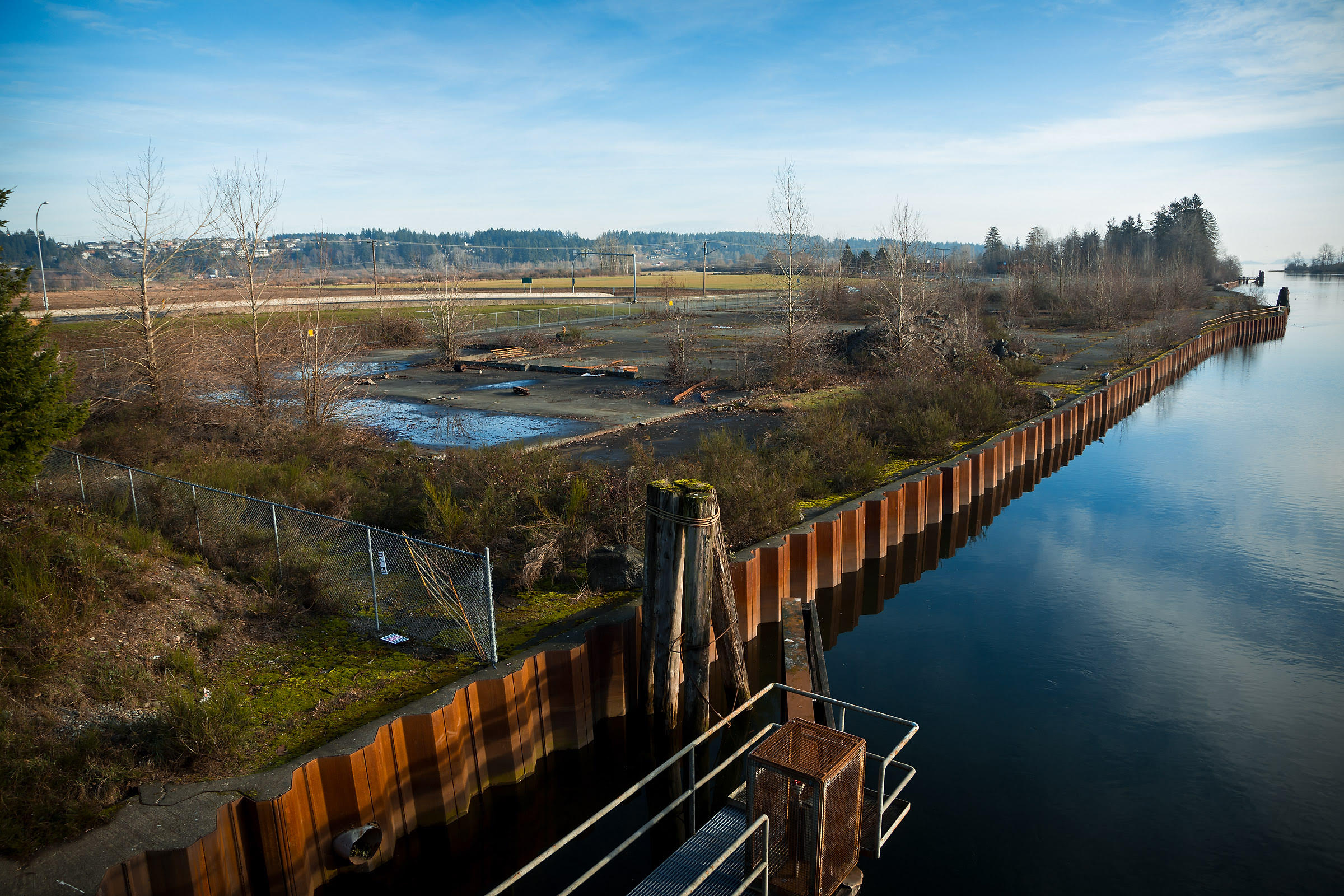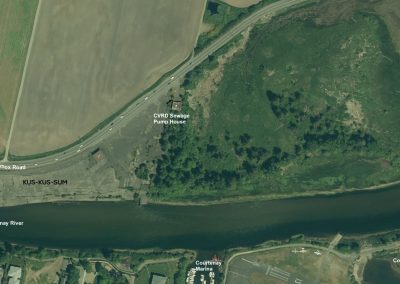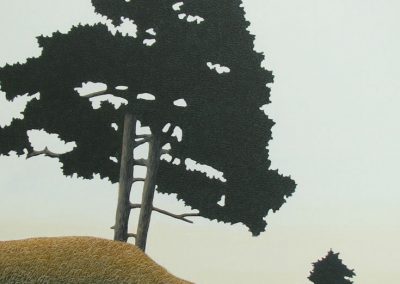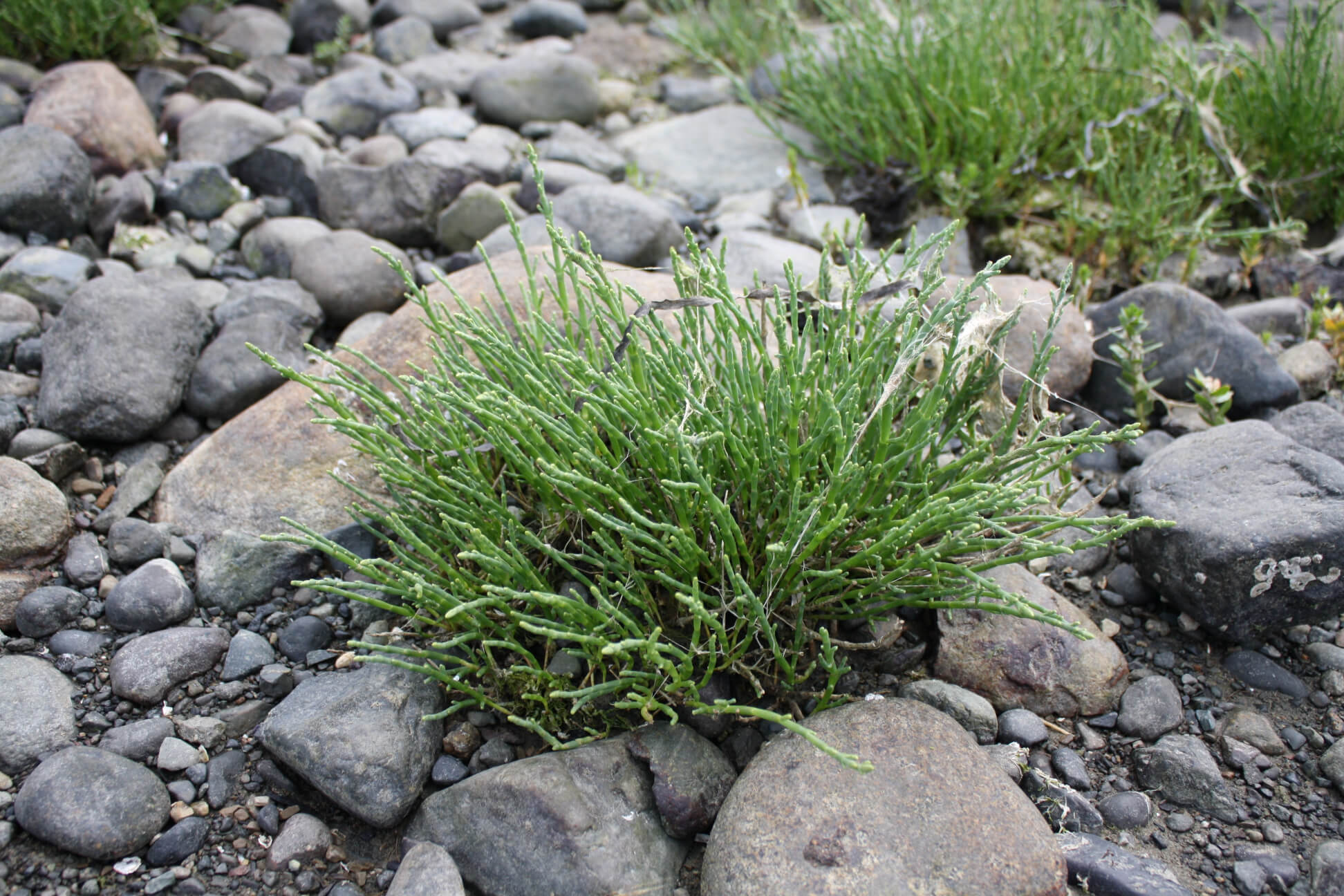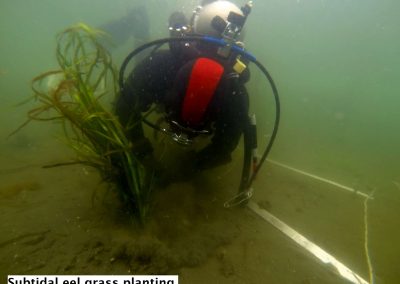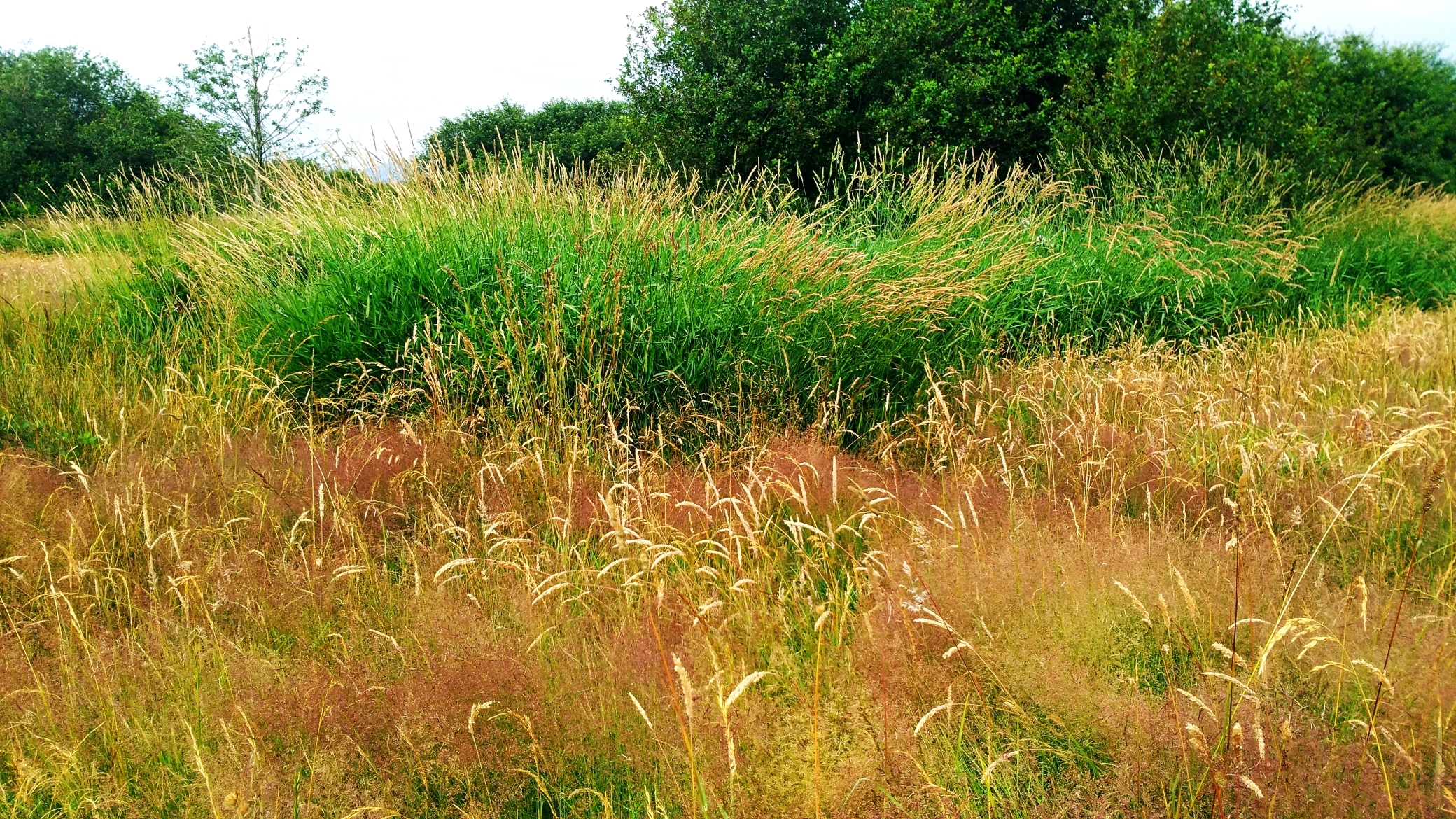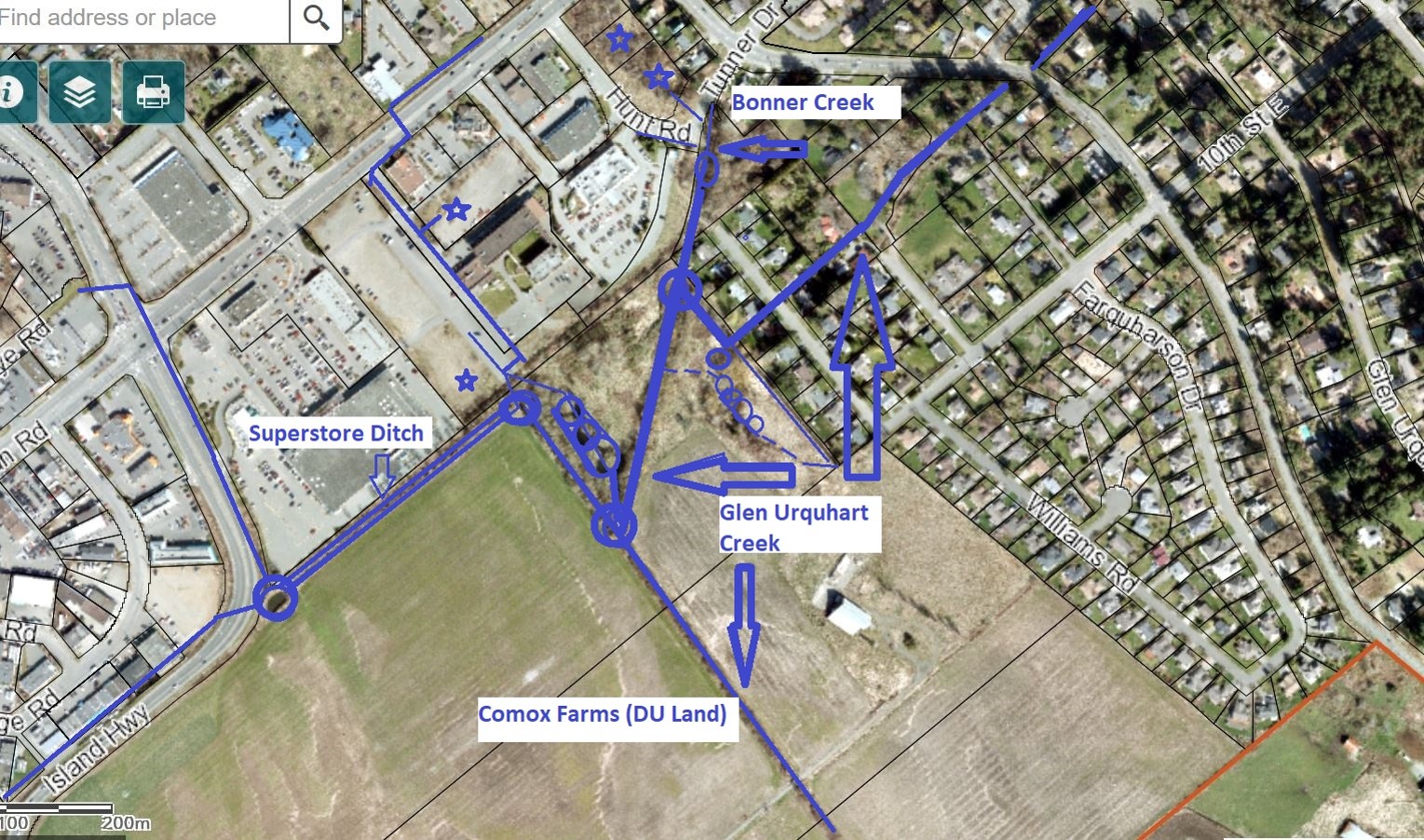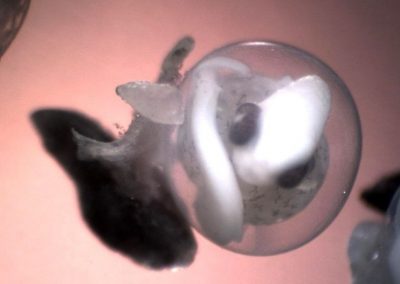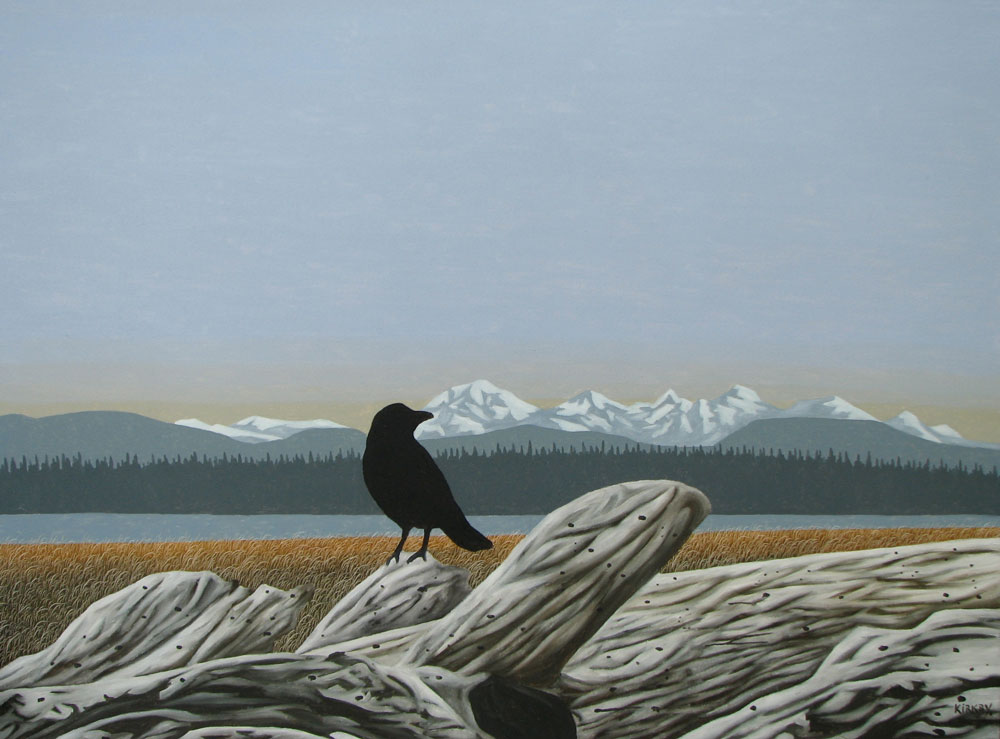Project Watershed`s 2021 Annual Report
Photo Gallery
Human Resources
The Project Watershed staff and board team has changed and expanded over the last year. At the board level, Lyle Carlstrom is taking a hiatus so that he can assist as a lawyer in the Kus-kus-sum land acquisition process but hopes to be rejoining us soon. All other board members have continued on in the same positions as last year and will be standing for their position again at the AGM on May 30, 2021. The board presently consists of Pat Sloan, Chair; Bill Heidrick, Vice Chair; Alisha Drinkwater, Co-Vice Chair; Brian Storey, Treasurer; Dan Bowen, Technical Director; Kathy Haigh, Fundraising and Outreach Director; Don Castleden, Estuary Working Group Chair; Bill Heath, Mapping and Kelp Director. For more information about each of them, visit our Board Directory.
We were happy to announce the addition of an Executive Director to our staff team. In January, Caitlin Pierzchalski was hired to help us manage our growing organization. Caitlin is a restoration ecologist from Vancouver, who has been working in and learning from marine and coastal environments throughout the Salish Sea for the past 10 years. We have also added Jay Baker-French to our technical team as a restoration specialist. Jay is a recent Masters graduate from SFU and an enthusiastic, hard-working member of the team. Jennifer Sutherst, who took a brief leave from Project Watershed over the holiday season, rejoined us in January and has hit the ground running to enable us to meet our 2021-2022 project goals. Our staff team continues to include Caila Holbrook, Manager of Fundraising and Outreach; Fran Kwiecien, Bookkeeper; Kathryn Clouston, Office Administrator; and Virginia East, Citizen Science & Stewardship Coordinator. For more information about our staff please visit the Staff Directory.
In addition to our regular staff base, we are currently employing four seasonal part time environmental technicians. These technicians will be supporting the field components of our Kus-kus-sum and Glen Urquhart Creek restoration projects this year. They will be engaged in monitoring, invasive species removal, native species planting, and other restoration activities related to the projects mentioned. These positions are supported through the Healthy Watersheds Initiative, which is delivered by the Real Estate Foundation of BC and Watersheds BC, with financial support from the Province of British Columbia as part of its $10-billion COVID-19 response.
Over the past year we have had a wide variety of volunteers helping us to meet our project and fundraising goals. We would like to thank everyone for all the time and energy that has been put into our projects and initiatives over this past year. We look forward to all the things we will accomplish together over the next year.
We would like to thank the Comox Valley Comunity Foundation for their support of our staff and programs during COVID. Please note that our offices are still closed as our staff are doing the majority of their work from home. If you need to contact a specific person please email them, addresses can be found on our board/staff pages of our website and our contact us page. To set up an appointment please email info@projectwatershed.ca.
Project Watershed completed raising the funds for the acquisition of the Kus-kus-sum property, an 8.3 acre former sawmill site, on November 30, 2020. This was a pivotal achievement that enabled us to move on to restoration of the site. Our small non-profit succeeded in raising over $3 million dollars to purchase the site in just over three years. Due to COVID we have not been able to celebrate this milestone in person, however, we hope to be able to do so in the near future.
The purchase of the property was made possible through the contributions of thousands of people, businesses, and organisations from within our community and beyond. The Provincial Government contributed $650,000 on November 28, 2020, in addition to the $1M they had contributed previously, to bridge the funding gap and seal the deal. Substantial contributions towards the purchase also came from the Fish and Wildlife Compensation Program, the Blue Moon Foundation, the Ngan-Page Family Fund, the Sitka Foundation, the Denton Family Foundation, the Li-Grimmer Family Fund and the Maple Cross Foundation. We’ve received a generous contribution from Micah Messent’s Legacy Funding. A significant portion of this funding will go to support the restoration at Kus-kus-sum and another portion will go to support a program that honours Micah’s continued contributions to conservation in the Comox Valley.
Funding was also raised through a variety of events. Funds raised over and above the purchase price have been earmarked for the restoration and protection of the site.
Events included:
- Paintings, By The Numbers, September 2020 – raised over $25,000
- the November Fundraising Blitz which included a reverse telethon, auction and 50/50, November 2020 – raised over $60,000
- Earth Week 50/50 for Kus-kus-sum, April 2020 – raised over $2,900
- Sponsor a Salmon, ongoing – to date raised over $18,000
- Engel & Volkers, ongoing third-party fundraiser – to date raised over $10,200
- Run to Beer, a third-party fundraiser – raised over $2,200
- Mask sales, an ongoing third-party fundraiser – to date raised over $2,900
Project Watershed thanks everyone involved in the fundraising process, the most current list of donors is available at Friends of Kus-kus-sum.
In February 2020, Project Watershed purchased the property and is holding it in trust for the K’ómoks First Nation and the City of Courtenay. The City and the Nation will jointly own and manage the property once co-ownership and co-management agreements are in place. The long term goal is for the property to transfer completely to the K’ómoks First Nation in the near future.
The first order of business in the restoration of the Kus-kus-sum site was to remove the office building that remained on the property. This task was completed during March, 2020, by B&D Containers Ltd. working in conjunction with Dig-Dug Excavating. Over the summer we plan to remove all the hard surfacing at the site. This will be a noisy, dusty endeavour but a sure sign of progress as we work towards the complete rehabilitation of the site for fish and wildlife. The restored site will also become an eco-asset for our community.
Funding for the restoration of Kus-kus-sum is currently coming from a variety of contributors including:
- the Healthy Watersheds Initiative, which is delivered by the Real Estate Foundation of BC and Watersheds BC, with financial support from the Province of British Columbia as part of its $10-billion COVID-19 response.
- the Fish and Wildlife Compensation Program
- the World Wildlife Fund
- the Habitat Conservation Trust Fund
- the Pacific Salmon Foundation
- and the general public
Kus-kus-sum Page
Friends of Kus-kus-sum
Donate
Sponsor a Business Salmon
Latest Kus-kus-sum News
Kus-kus-sum Spixls – Restoration Time-lapse
Luke Phillips from LSP Media has helped us create what he is calling Spixls – crowd sourced time lapse photo documentation of a site.
Seal Monitoring 2024
Join Jay and Virginia from Project watershed for our Seal or Pinniped monitoring citizen science project at Kus-kus-sum. Observations will be made throughout the spring and summer at various locations from Condensory Road Bridge toward Kus-kus-sum along the Courtenay River Estuary.
Winter works at Kus-kus-sum
Project work at Kus-kus-sum isn’t taking a holiday break. In early January, you may have seen some large machines near the wall – we got some excited phone calls about this! However, they were not there to start removing the wall, they were there to take important soil cores to analyse a patch of soil near the wall.
Planting Success at Kus-kus-sum Fall/Winter 2023
A huge thank you to all our industrious volunteers and supporters who came out to assist with our fall planting at Kus-kus-sum!
Kus-kus-sum Planting Fall 2023
We are getting thousands of plants delivered to the site this week and are looking for volunteers to help get them in the ground before winter.
In the 2020-2021 period, Project Watershed made progress on some of the priority projects laid out in the Salish Sea North East Vancouver Island Salmon Highway (Nearshore Habitat) Coastal Restoration Plan created in 2019. The creation and implementation of this plan is being funded through a five year grant from Fisheries and Oceans Canada. The plan identifies 70 potential nearshore habitat restoration projects along 120 km of the east coast of Vancouver Island and provides an overall strategy for the marine restoration we are engaged with. The plan focuses on salt marsh, eelgrass and kelp restoration and includes the salt marsh restoration that will occur at Kus-kus-sum.
Our boots-on-the-ground projects for the year included salt marsh and kelp restoration and research, as well as continued monitoring of the projects we completed in the first three years of the initiative. On June 17-19, 2020, with the help of 19 volunteers, Project Watershed successfully planted almost 2,500 individual plants in Fanny Bay to restore the salt marsh along this vulnerable coastline. The plantings were composed of Salicornia, Distichilis and dune grass species. During this planting, a field trial was conducted to evaluate the survival of planting salt marsh as individuals versus planting in clumps of three or four. Preliminary results suggest that there is no appreciable difference in survival between the clump vs. individual plantings read more …
Another project that has come to fruition this year is the salt marsh restoration at the Dyke Slough on Comox Road south of Kus-kus-sum. This spring, Project Watershed rebuilt the salt marsh platforms on the estuary side of Comox Road. This meant re-nourishing the area with soil and sediment to rebuild the base upon which the salt marsh grows. The next phase of the project will include planting the site with native salt marsh vegetation during an appropriate low tide window in June, 2020. The project was done to improve the area for fish and wildlife, and support climate adaptation in our estuary.
As for our bull kelp work, we continued to monitor our kelp transplants at Maude Reef and the healthy kelp bed at the Oyster River over the 2020/2021 period. We monitored water quality, temperature and light at these sites and collected GPS waypoints to determine the exact size of the kelp forest. We now have three years of data.
This past year we also tried a new kelp restoration technique whereby we moved small juvenile kelp plants attached to individual rocks by their holdfasts from the healthy Oyster River donor site to another area where bull kelp is struggling to grow. Twenty-three of the small bull kelp plants from the Oyster River remain in our transplant area. Unfortunately the rest drifted away – despite attempts to weigh them down – as they grew their flotation increased and they were taken away by the currents.
Unfortunately, Covid19 did impact some of our coastal restoration activities planned for 2020 and we were not able to transplant eelgrass last spring. However, we were able to defer this work to this year and an eelgrass transplant is planned for next month (June 2021) just south of Ships Point in Fanny Bay near where we completed the salt marsh restoration last year.
Coastal Restoration Page
Coastal Restoration Plan
Donate
Latest Coastal Restoration News
Project Watershed Plans for Spring Eelgrass Transplants
Spring – a great time for planting in your garden and in the intertidal/subtidal zones. Once again Project Watershed will be working to restore eelgrass (Zostera marina) habitats by undertaking transplants in areas where the eelgrass is sparse or missing as determined by our coastal nearshore habitat mapping work.
Coastal Restoration Update August 2020
Nikki Wright from Seachange Marine Conservation Society and Maria Cantazaro from the Pacific Salmon Foundation (PSF) visited our kelp research site at Oyster River and our saltmarsh projects. Maria is a researcher working for the PSF on a report looking at the importance of nearshore, habitat connectivity and estuarine habitat to Pacific salmon.
Coastline Restoration in Fanny Bay
On June 17-19, 2020 Project Watershed organized a planting session to restore the vulnerable coastline in the Fanny Bay area. During the three days, our staff and 19 volunteers helped plant almost 2500 individual plants, comprised of Salicornia, Distichilis and dune grass species. This planting compliments another coastal restoration project where the shoreline was revegetated to protect the area from erosion.
Salish Sea Kelp Restoration Enhancing Habitat Connectivity
A kelp forest is a type of nearshore aquatic habitat, found along rocky coasts with wave action or strong currents in depths of 4 to 20 meters.
Project Watershed Continues Restoration Work Along Mallard Creek
Back in February, Project Watershed and volunteers from Aecon Water Infrastructure Inc. planted over 100 native species along a section of Mallard Creek.
Reed canary grass is an invasive plant that was brought into the Comox Valley with agricultural practices from Europe. Since 2004, it is estimated that the amount of reed canary grass in the K’ómoks Estuary has tripled. In addition to the fact it is outgrowing our native species, it provides little value for native wildlife or insects.
To help combat reed canary grass, Project Watershed has mapped locations where it is taking hold and has studied how to best remove it. Our findings suggested that a combination of mowing, shading and staking with willows may be the most effective treatment in small freshwater streams.
In 2020-2021, we have continued work removing and excluding reed canary grass from Mallard Creek which drains the Back Road area upland of the Comox Bay Farm. On October 23 and 24, 2020, 21 volunteers helped implement our restoration prescription streamside along Mallard Creek. Volunteers harvested, planted, and mulched nearly 1000 willow stakes along 150 metres of the creek. There were around 1000 extra willow stakes left over from this event, so another willow stake planting occurred on February 27 and 28, 2021. These were planted at the confluence of Mallard Creek and Dyke Slough, on the Simpson Farm conservation area and covered another 100 metres of stream bank. We are very thankful to the property owners who allowed access for these planting events.
While our prescription is showing positive results in the locations we are targeting, it is clear that it will take many years of hard work to control this invasive plant, deplete its seed bank and establish natural streamside vegetation in the affected areas.
Working with Ducks Unlimited Canada, we have started restoration work in the northernmost corner of the Comox Bay Farm properties. This is the parcel containing Len’s Pond, the somewhat infamous ‘compensation’ habitat constructed in the 1990’s and intended to replace wetlands lost when the Mex Pub was built. This parcel is highly impacted by surrounding land uses – intensive agriculture, urban neighbourhoods, and commercial properties. Furthermore, these pressures are increasing as time goes forward, with the surge in housing construction putting even more impervious surfaces into the catchment. Glen Urquhart Creek flows through this parcel and has been channelized and treated as an agricultural ditch for many decades. Despite this, and the very ‘flashy’ nature of the water flows in this system, the creek supports impressive populations of Coho and cutthroat trout fry, and freshwater lamprey have been observed spawning there as well!
Our focus on this property has three main components: improving in-stream habitat for salmonids and freshwater lamprey by installing riffles and spawning gravels, boulder and large woody debris complexes, increasing off-channel areas, and adjusting baseflow depth to optimize lamprey spawning; improving riparian conditions by removing invasive plants and replanting with native species; and improving amphibian habitat in a small impounded wetland by removing reed canary grass, deepening the open water area, and planting the banks with native plants.
Project Watershed continued supporting and performing forage fish research throughout 2020/2021. Forage fish are small schooling fish that form an important part of the marine food chain as they are prey for many other marine species. Some of these forage fish, specifically Pacific sand lance and surf smelt, spawn on beaches in our area. Project Watershed staff and volunteers have been surveying beaches in the Comox Valley to identify ones that are used for spawning. This information will be important to protecting this vital nursery habitat. The beaches are being surveyed for the presence of eggs, eDNA, and adult fish. We are currently gearing up for another round of summer surveys which will start in June 2021.
Here are a few highlights from the last year:
- Between May 2020 and February 2021, 60+ amazing volunteers were engaged in sampling, sieving, vortexing, and counting eggs.This totals over 800 hours of volunteer and staff time.
- There were 119 field events covering Cortes Island, Hornby Island, Quadra Island, Campbell River, and the Comox Valley.
- New locations like Quadra Island, Shark Spit, Royston Wrecks, Campbell River, and Seal Bay were sampled along with our regular core and blitz sites.
- A Forage Fish Brochure and a field day video were produced.
- A Forage Fish course was presented through Elder College at North Island College.
- The K’ómoks First Nation, through their Guardian Watchman Program, performed subtidal sampling in our area.
- A Forage Fish Habitat Assessment document was drafted highlighting three sites that might benefit from habitat restoration (Point Holmes, Curtis Beach, and Balmoral Beach).
- Over 100 eDNA samples are being analyzed by the University of Victoria Microbiology Lab. The results will be posted in the near future.
- Pacific sand lance were found at Shingle Spit on Hornby Island, multiple sites on Cortes Island, two locations at Goose Spit, Kye Bay, and Air Force Beach. These sites are shown in the maps in the photo gallery of this section. Please note that all positive sites are pending expert verification.
In addition to the beach surveys, we are also working with and supporting the research of three postgraduate students:
- Will Duguid, a post doc fellow at UVic studying the stomach contents of winter juvenile salmon in the Salish Sea. He is also part of the Adult Salmon Diet Program (ASDP) team, who studies adult Chinook and Coho salmon. This work focus’ on what salmon eat, when they eat specific forage fish, and what they are eating within DFO Management areas.
- Jacqueline Huard, a MSc student from the UBC working to develop a robust intertidal model using data from across the Forage Fish Monitoring Network with a focus on Pacific sand lance intertidal habitat.
- Nicola Houtman, a MSc student from the UVic using unmanned aerial vehicles (UAVs or drones) to aid in mapping forage fish schooling and feeding locations in the open ocean.
Project Watershed has also teamed up with DFO which is modelling Pacific sand lance burrowing in subtidal areas. The plan is to use all the information on intertidal, subtidal and pelagic forage fish habitat gathered over the past three years to produce a forage fish biodiversity ‘hot spots’ maps to better guide conservation and management decisions.
This initiative is a partnership between Project Watershed, the K’ómoks First Nation, BC Salmon Research and Innovation Fund, North Island College, World Wildlife Fund, Fisheries and Oceans Canada (DFO), Environment and Climate Change Canada, Comox Valley Regional District, and community citizen science volunteers. We are also connected to the Forage Fish Monitoring Network which is composed of forage fish researchers and citizen scientists that are surveying beaches and performing research across the Salish Sea. The network includes the World Wildlife Fund, Mount Arrowsmith Biosphere Region Research Institute, Peninsula Streams Society, and many others.
Donate
Latest Forage Fish News
Project Watershed is hiring a Forage Fish Technician! (CLOSED)
This position is now closed.
Project Watershed is hiring a Forage Fish Lead Biologist! (Closed)
This position is now closed.
Working Together to Identify Forage Fish Spawning Beaches
This year marks the 5th year of a partnership between Comox Valley Project Watershed Society and North Island College on a long-term study to examine intertidal spawning habitats of forage fish in the northern Salish Sea.
Education Initiatives
We received funding from the Comox Valley Community Foundation, the Comox Valley Regional District and the Peninsula Co-op to run estuary and watershed-focused educational outreach. As all our May/June 2020 field trips and classroom visits were cancelled due to COVID-19, we focused on disseminating the resources that are available on our website during this time. We adapted our presentations so that we could provide them via Zoom in the fall/winter and spring to both homeschool and in- classroom learners. In May 2021, we resumed small group field trips to the Airpark. The field trips centered around a nature walk that focused on the plants that are found in the area and their importance to the estuarine ecosystem.
In addition to our work with schools, we also engaged in online educational outreach for adults. Project Watershed staff and board members spoke at the Watershed Resilience CLIMATE CHANGE, COLLABORATION AND LANDSCAPE RESTORATION webinar held on the 21-23 of October 2020. We also presented information about Kus-kus-sum and our other projects to various small groups via Zoom. Our Forage Fish team created and presented an Elder College course in February that received high attendance and much acclaim.
Resources K - 12
Despite the decrease in events over the year, Project Watershed was able to host and attend a few important events since our AGM last May. These have included:
- Paintings By The Numbers
- Shoreline Cleanup at Kus-kus-sum
- Watershed Resilience CLIMATE CHANGE, COLLABORATION AND LANDSCAPE RESTORATION webinar
- November Fundraising Blitz including a reverse telethon, an auction, and a 50/50
- Volunteer/Donor Appreciation 2021
- Winter Willow Planting at Mallard Creek
- Earth Week including the Know Your Watershed Scavenger Hunt, the Decentralized Shoreline Cleanup, and an Earth Week 50/50 for Kus-kus-sum
- Native planting at the Courtenay Airpark (postponed Earth Week activity)
- Presentation of the 2020 Keeping It Living Award to Cumberland Community Forest Society
Related Posts
Community Water Monitoring Training Sessions
Do you want to explore your local watersheds while gathering valuable data to support research and decision-making? Volunteers are needed to monitor water quality in fall 2024 in a number of local watersheds.
Fall Action at Kus-kus-sum
You may have noticed that excavators were back at work on the Kus-kus sum site, continuing to transform the former sawmill site into a healthy estuarine ecosystem.
Ken Kirkby Legacy Challenge
In 2018, Ken Kirby became involved with Project Watershed and the Kus-kus-sum Project and contributed right up to his death on June 20, 2023. While donating 50 of his most prized paintings prior to his passing, Ken expressed his deep appreciation for our partnerships...
Summer Forage Fish News
Over the summer the Project Watershed Forage Fish Monitoring Team have been busy with data analysis, project planning, collaborating with the Coastal Forage Fish Network and field sampling in the Comox Valley and Campbell River area. To date we have had 21 volunteers contribute 97.5 hours to our forage fish monitoring efforts!
Project Watershed is hiring a Forage Fish Technician! (CLOSED)
This position is now closed.
Project Watershed is hiring a Forage Fish Lead Biologist! (Closed)
This position is now closed.



